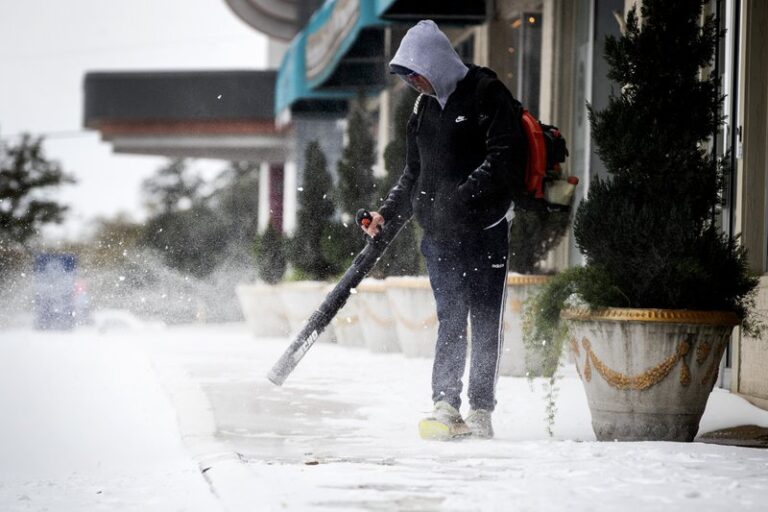
(AP) — Deadly weather will be hitting the U.S. more often, and America had better get better at dealing with it, experts said Wednesday as Texas and other states battled winter storms that blew past the worst-case planning of utilities, governments and millions of shivering citizens.
This week’s storms — with more still heading east — fit a pattern of worsening extremes under climate change and demonstrate anew that local, state and federal officials have failed to do nearly enough to prepare for greater and more dangerous weather.
At least two dozen people have died this week, including from fire or carbon monoxide poisoning while struggling to find warmth inside their homes. In Oklahoma City, an Arctic blast plunged temperatures in the state capital as low as 14 degrees below 0 (-25 Celsius).
“This is a different kind of storm,″ said Kendra Clements, one of several businesspeople in Oklahoma City who opened their buildings to shelter homeless people, some with frostbite, hypothermia and icicles in their hair. It was also a harbinger of what social service providers and governments say will be a surge of increased needs for society’s most vulnerable as climate and natural disasters worsen.
Other Americans are at risk as well. Power supplies of all sorts failed in the extreme cold, including natural gas-fired power plants that were knocked offline amid icy conditions and, to a smaller extent, wind turbines that froze and stopped working. More than 100 million people live in areas under winter weather warnings, watches or advisories, and blackouts are expected to continue in some parts of the country for days.
The crisis sounded an alarm for power systems throughout the country: As climate change worsens, severe conditions that go beyond historical norms are becoming ever more common. Texas, for example, expects power demand to peak in the heat of summer, not the depths of winter, as it did this week.
The dire storms come as President Joe Biden aims to spend up to $2 trillion on infrastructure and clean energy investment over four years. Biden has pledged to update the U.S. power grid to be carbon-pollution free by 2035 as well as weatherize buildings, repair roads and build electric vehicle charging stations.
“Building resilient and sustainable infrastructure that can withstand extreme weather and a changing climate will play an integral role” in creating jobs and meeting Biden’s goal of “a net-zero emissions future,” White House press secretary Jen Psaki said Wednesday.






